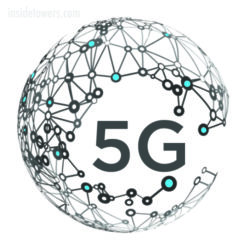The FAA released a list of 50 airports on Friday that will have buffer zones when wireless carriers AT&T and Verizon turn on new 5G C-band service on January 19. The agency says it sought input from the aviation community where the proposed buffer zones would help reduce the risk of disruption. Traffic volume, the number of low-visibility days and geographic location factored into the selection, according to the agency.
As pointed out by the Wall Street Journal, notably busy airports like Chicago O’Hare, Orlando International, Los Angeles International, and Dallas / Fort Worth International are included on the list, along with airports in locations that are often impacted by foggy conditions, such as Seattle / Tacoma International and San Francisco International.
Some airports — including major hubs like Hartsfield / Jackson International and Denver International — didn’t make the list, either because they aren’t in the 46 locations where 5G C-band deployment will take place, or they can’t permit low-visibility landings, according to the FAA.
The wireless carriers agreed to turn off transmitters and make other adjustments near these airports for six months to minimize potential 5G interference with sensitive aircraft instruments used in low-visibility landings, Inside Towers reported. AT&T and Verizon also agreed to delay starting their 5G transmissions twice to accommodate the FAA as it figures out ways to mitigate potential interference.
AT&T and Verizon currently offer 5G service using high-band millimeter wave technology that only covers small areas, as well as the low-band spectrum, which provides a lot of coverage with slow service akin to 4G LTE, reports The Verge.
The FAA said it continues to work with the aerospace manufacturers and wireless companies to make sure 5G is safely deployed and to limit the risk of flight disruptions at all airports.
By Leslie Stimson, Inside Towers Washington Bureau Chief





Reader Interactions